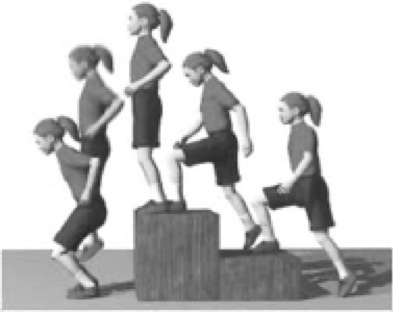Bones undergo changes throughout our lives, as old bone is broken down and new bone forms. But the most important time for building a strong skeleton is during childhood and adolescence. Bone strength depends on both the size of the bones and the amount of mineral they contain.
The greatest gains in bone size and mineral content occur in adolescence. At puberty, hormonal changes take place that start sexual maturity and speed up bone growth. Bones not only get longer and wider, they also get denser.
People reach their peak bone mass, or maximum bone size and density, by their late teens or early twenties. As early as age 30, some bones begin to slowly lose mass.
The more bone mass we “Bank” in childhood and adolescence, the better we withstand the inevitable bone losses and the better protected we are from osteoporosis and bone fractures later in life.

What affects children’s bone health?
The genes we inherit, our hormones and our lifestyle all affect our peak bone mass. Genetic factors have the greatest influence on peak bone mass, but to reach his or her “genetic potential,” a child needs adequate levels of certain hormones along with healthy eating and exercise habits.
Growth hormone and the sex hormones oestrogen and testosterone at puberty are essential for building bone mass in both boys and girls. Maintaining a healthy weight and getting enough vitamin D, calcium, protein, and physical activity are also key to bone health.
Calcium is the main mineral in bone, and vitamin D helps the body absorb calcium. Weight-bearing exercise, such as running and jumping, helps build muscle and bone strength.
Adolescent girls need to be moderate in their approach to diet and exercise. Menstruation can stop in girls who exercise excessively or are extremely underweight (as in anorexia).
Girls who never start their periods or stop menstruating often have low oestrogen levels, which can harm their bone health.
Is your child getting enough vitamin D and calcium?
Most of our vitamin D is produced when our skin is exposed to sunlight. Children get vitamin D from playing outdoors, but it’s hard to tell if they’re getting enough.
Since few foods naturally contain vitamin D, most milk and infant formula are fortified (meaning vitamin D is added).
Infants, children, and adolescents need at least 400 IU (international units) of vitamin D each day. Children of all ages who do not get 400 IU a day from their diet should take a supplement, prescribed by their doctor.
Children and adolescents with dark skin, limited sun exposure, or certain chronic diseases are more likely to be deficient in vitamin D. A simple blood test can tell your vitamin D status.
Pregnant and breastfeeding women need at least 1,000 mg of calcium each day, along with adequate vitamin D, to support their own and their babies’ bone health.
The recommended daily calcium intake for children and adolescents varies by age:
| Age | Dosage |
|---|---|
| 0-6 months | 210 milligrams (mg) |
| 7-12 months | 270 mg |
| 1-3 years | 500 mg |
| 4-8 years | 800 mg |
| 9-18 years | 1,300 mg |
What should you do with this information?
Set an example for your child by modelling good bone health habits. Keep calcium rich foods on hand and encourage physical activity. Talk about your child’s bone health whenever you consult your paediatrician.
Ask if your child needs nutritional supplements or treatments for an underlying medical condition.
If your child has a hormone related disorder that might threaten bone health, you should consult an Endocrinologist, a specialist in the field, about whether hormone treatment is needed.
Also see,